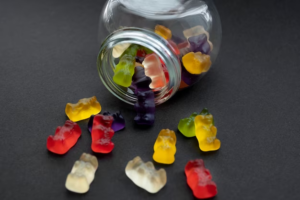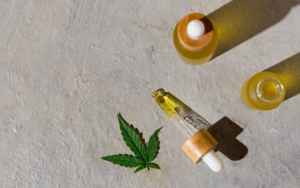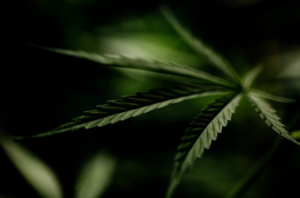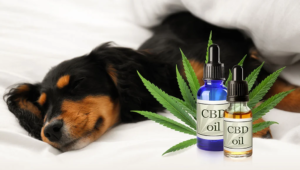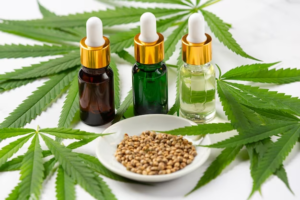
CBD pens have emerged as a popular method for consuming cannabidiol (CBD) following its legalization in numerous nations. These pens have piqued interest due to CBD’s potential medicinal benefits, which can be experienced through inhalation. This article delves into the nuances of vaping CBD, focusing on the therapeutic potentials, safety concerns, and types of available products.
The Ingestion Pathways of CBD
CBD, or cannabidiol, can be introduced into the body through various pathways. Each method of ingestion offers different advantages and affects the body in unique ways. Here’s an in-depth look into the main ingestion pathways for CBD.
1. Oral Consumption
- Method: CBD is consumed via capsules, oils, tinctures, or edibles like gummies and chocolates.
- Advantages: It’s the most straightforward method, allowing for easy dosage control. Edibles can also offer a pleasant taste, masking CBD’s earthy flavor.
- How It Works: Consumed products pass through the digestive system. The liver then metabolizes the CBD, and it enters the bloodstream.
- Onset & Duration: Effects typically begin in 30 minutes to 2 hours and can last several hours. However, due to the “first-pass effect” in the liver, oral CBD may have reduced bioavailability.
2. Sublingual and Buccal
- Method: CBD tinctures, oils, or lozenges are placed under the tongue (sublingual) or between the cheek and gum (buccal).
- Advantages: This method bypasses the digestive system, leading to faster and more efficient absorption.
- How It Works: The mucous membranes under the tongue or in the cheek absorb the CBD directly into the bloodstream.
- Onset & Duration: Effects can be felt within 15–45 minutes and can last for several hours.
3. Inhalation
- Method: Vaping or smoking CBD-rich cannabis or concentrates.
- Advantages: Provides immediate effects and has a higher bioavailability compared to oral consumption.
- How It Works: When inhaled, CBD directly enters the lungs and quickly diffuses into the bloodstream.
- Onset & Duration: Effects are felt almost immediately and can last 2–3 hours.
4. Topical
- Method: CBD creams, balms, or lotions are applied directly to the skin.
- Advantages: Ideal for localized relief, such as joint pain or skin conditions.
- How It Works: CBD interacts with the skin’s endocannabinoid receptors without entering the bloodstream.
- Onset & Duration: Effects are felt within minutes to an hour and can last for several hours.
5. Rectal and Vaginal Suppositories
- Method: CBD-infused suppositories are inserted into the rectum or vagina.
- Advantages: This method can offer targeted relief for conditions like endometriosis or rectal inflammation and might have higher bioavailability than oral routes.
- How It Works: The suppository dissolves, and the CBD is absorbed into the nearby blood vessels.
- Onset & Duration: Effects can be felt within 15–45 minutes and last several hours.
Delving Into CBD’s Legality
The 2018 Farm Bill redefined hemp’s classification within the Controlled Substances Act, rendering certain hemp-extracted CBD products federally permissible, provided they contain below 0.3% THC. However, products surpassing this THC limit remain federally proscribed but may be legal as per some state ordinances. It’s vital for consumers to remain abreast of state legislation and be cognizant that the FDA hasn’t endorsed non-prescription.
Decoding CBD
CBD, derived from the cannabis plant, is a non-psychoactive component that’s garnered attention for potential therapeutic applications, encompassing:
- Pain modulation
- Anti-inflammatory actions
- Anxiety alleviation
- Possible treatments for seizure and certain neurological disorders
Recognized Applications and Ongoing Research
The FDA recently greenlit Epidiolex, a CBD oral solution devised for addressing infrequent epilepsy variants. Moreover, in regions like Canada and Europe, Sativex, which merges CBD and THC, is accessible for managing multiple sclerosis-induced spasticity. Presently, approximately 228 CBD studies are either concluded, active, or awaiting results.
Challenges in CBD Consumption
Uniform dosing remains an unresolved challenge, with indeterminate recommendations surrounding the optimal therapeutic amount. Furthermore, with consumption avenues ranging from edibles, and topical applications, to vaping, achieving consistency becomes more convoluted.
The Intricacies of Vaping CBD Oil
E-cigarettes have evolved as a favored apparatus for consuming cannabis-infused products, inclusive of CBD. Preliminary studies accentuate the rapidity of clinical effects achieved when medicament is directly delivered to the lungs via vaping. However, the precise advantages and detriments of vaping CBD warrant more in-depth exploration.
Potential Perils of Vaping CBD
Despite the proliferation of CBD products, regulatory oversight remains fragmented. As a consequence, product authenticity and dosage can be unpredictable. Recent medical reports have highlighted lung injuries linked to vaping, underscoring the imperative for caution.
Deciphering Pens and Their Formulations
Selecting the right pen and formula for vaping CBD can be intricate, given the product heterogeneity and scarce scientific backing. For those wondering “Where to buy CBD pens?” it’s pivotal to prioritize trusted, reputable sources.
CBD in Pain Management
Although many turn to cannabis for pain mitigation, the specific impact of vaping CBD on pain remains uncharted. Existing studies emphasize the need for long-term investigations.
CBD’s Role in Alleviating Depression
While CBD’s potential in mitigating depression-associated symptoms is being explored, it’s crucial to approach findings with caution given the mixed results.
CBD and Anxiety Management
Preliminary research suggests that CBD may be instrumental in managing a range of anxiety disorders. Yet, the definitive effects, particularly of chronic dosing, remain ambiguous.
Comparison Table
| Feature | Traditional CBD Oil | CBD Vape Pen |
| Method of Consumption | Oral/Sublingual | Inhalation |
| Onset of Effects | 30 mins – 2 hours | 5-10 minutes |
| Duration of Effects | 4-6 hours | 2-3 hours |
| Ease of Use | Simple, dosage can be measured | Convenient, might require refills |
| Portability | Moderate, risk of spillage | High, designed for on-the-go use |
| Bioavailability (Efficiency) | 6-20% | 34-56% |
| Recommended For | Consistent daily routine | Immediate relief |
The table provides a general overview. Individual experiences may vary. Always consult a medical professional before starting any CBD regimen.
Potential Side Effects of CBD
CBD is generally well-tolerated and considered safe for consumption. However, individual responses to CBD can vary, and it’s vital to be informed about potential side effects. Some commonly reported side effects include:
- Dry Mouth: Like other cannabinoids, CBD might interfere with saliva production, leading to a sensation of dry mouth.
- Dizziness or Lightheadedness: This is often related to a temporary drop in blood pressure shortly after taking CBD.
- Changes in Appetite: Some users have reported increased appetite, while others noted a decrease.
- Diarrhea: High doses of CBD may upset the stomach, leading to diarrhea.
- Interactions with Other Medications: CBD can interact with certain pharmaceutical drugs by inhibiting the activity of cytochrome P450, a family of liver enzymes.
Always consult with a healthcare provider when considering CBD, especially if already taking medication or if any of these side effects are a concern.
The Farming and Sustainability of Hemp
The surge in CBD’s popularity has also drawn attention to the methods of producing CBD, mainly through hemp cultivation. Here’s how the farming and sustainability of hemp play a crucial role:
- Soil Remediation: Hemp has the incredible ability to detoxify the soil. It can absorb pollutants and improve soil health, making it a valuable crop for environmental remediation projects.
- Water Consumption: Hemp requires significantly less water than many other crops, promoting sustainability, especially in areas with water scarcity.
- Pesticides and Herbicides: Hemp is naturally resistant to many pests, reducing the need for chemical pesticides. However, it’s essential to choose organically grown hemp to avoid exposure to harmful chemicals.
- Carbon Sequestration: Hemp is adept at capturing carbon dioxide from the atmosphere, thus contributing to the fight against climate change.
- Full Utilization: Beyond CBD extraction, almost every part of the hemp plant can be used, including seeds for nutrition, stalks for bio-composites, and more.
Embracing sustainable hemp farming practices not only ensures high-quality CBD products but also contributes positively to the environment and the economy.
Conclusion
The intricate landscape of CBD, coupled with varying regional regulations, makes it a complex subject. While the FDA has recognized certain therapeutic potentials, comprehensive understanding, especially regarding vaping, is in its nascent stages. Those pondering questions like “How long does a CBD pen last?” or “How long does CBD pen stay in your system?” must realize that definitive answers are still forthcoming.

